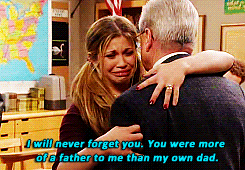You can see the difference it made here:
(click to enlarge)
In a future post I'll have a nice pic spam of before and after shots for multiple classrooms, but first I wanted to share the research behind the colors I chose. I knew there was a lot of theory out there about color design and choice, but I wanted to know what actual research had to say. Below are some of the notes and excerpts I pulled from research, as well as the sources for this information:
According to Barrett, et al.
Color has a more significant impact on student performance in Reading and Writing, versus other subjects like Math.
The color elements were initially rated with pale and white colors rated low and vivid (saturated) colors rated high. However, as already mentioned, wall and display colors were subsequently found to be curvilinear meaning that the optimum level for learning was in the middle of the ranges.
Color, white- or pale-colored walls with a colored accent wall or panel and brightly colored furniture were found to be optimum for learning.
According to Grangaard:
Students in classrooms with light blue and green painted walls had lower blood pressure and pulse, and better behavior than when they were in a room with brown and off-white walls.
According to Mahnke:
The fourth wall, the front of the room that faces the students, should be a different complementary or at least a darker hue than the other walls. […] The different hue and color at the front of the room helps to reduce students' eyestrain as they look up and down to write notes, etc. A deep tone on any one wall can reduce glare.
According to Nuhfer:
Colors best suited for classrooms reduce agitation, apprehension and promote a sense of well-being. In brief, colors that reduce tension and anxiety produce a home-like atmosphere, in contrast to an "institutional" one.
Studies show that monotone environments may induce anxiety and lead to irritability and an inability to concentrate.
Pastel oranges promote cheerful, lively and sociable moods that are desirable in a college classroom.
Pastel yellow has a similar cheerful effect.
Greens and blue greens in pastels are calming and provide a good background color suited to relaxation into tasks that require concentration.
Brightly coloured walls (as well as high light levels) may increase glare. Therefore, the wall colour in a classroom should not be too bright.
According to Yildirim et al.
Cream, the existing colour of the research environment, was the neutral colour; pink was the warm colour and blue was the cool colour. The results of the study clearly indicate that the use of different colours in the interior environment of a classroom has a statistically significant effect on the perceptual performance of male students.
Blue-coloured space was perceived more positively – described as happy, roomy, peaceful, pleasant, calm and comfortable – compared to the cream and pink-coloured spaces. On the other hand, blue coloured classrooms were considered less attractive, exciting and dynamic than the others.
In common with other studies, this study has found that the use of cool colour, blue for interior surfaces would engender pleasant, peaceful, calm and comfortable perception of occupants; whereas warm colours such as pink, would make space seems more stimulating but smaller.
Sources
Peter Barrett, Fay Davies, Yufan Zhang, Lucinda Barrett. The Holistic Impact of Classroom Spaces on Learning in Specific Subjects. 2016Grangaard, E. M. Effects of color and light on selected elementary students. 1993. (Doctoral dissertation).
Mahnke, F. H. Color, Environment and Human Response. 1996
Nuhfer, Edward B. Some Aspects of an Ideal Classroom: Color, Carpet, Light and Furniture." California State University. 2004.
Kemal Yildirim, Kubulay Cagatay, Nur Ayalp. Effect of wall colour on the perception of classrooms. Indoor and Built Environment. 2014




























